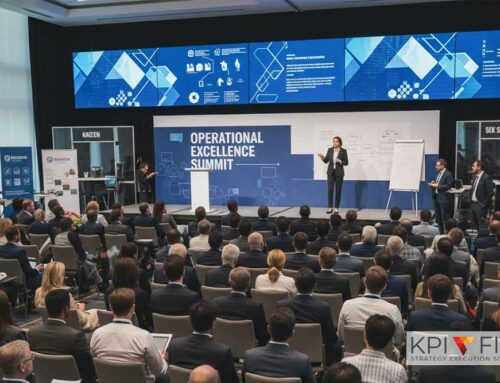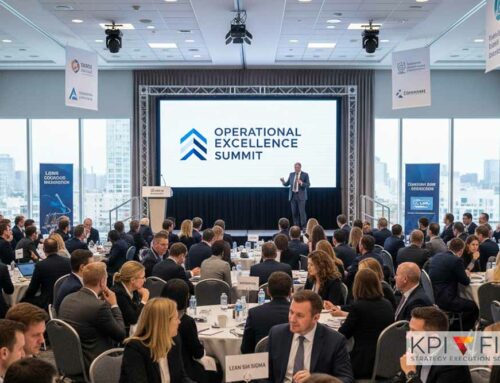It’s a common challenge: Sustaining a vibrant CI culture requires constant nurturing. A successful CI framework—the backbone of Operational Excellence—depends not just on the right CI tools but also on the collective enthusiasm and engagement of your people. If your Continuous Improvement projects are stalling or your Lean efforts are losing steam, it might be time for a strategic reset. Here are three high-impact ways to inject new energy and purpose into your Continuous Improvement Culture.
1. Shift the Focus from “Projects” to “Habits”
Many organizations make the mistake of treating CI as a series of large, intimidating projects (like a major Lean implementation or a big 6-month Kaizen event). While these are valuable, they can be exhausting and lead to burnout. A true CI culture is built on daily habits.
🎯 How to Implement This Shift:
-
Implement “Quick Wins”: Encourage every employee to identify and fix one small thing in their immediate workspace or process each day or week. This could be streamlining a repetitive task, updating an outdated document, or simply organizing their desk for better flow.
-
Use Continuous Improvement Software to create a specific category for these “Micro-Improvements” or “Quick Wins.” Setting a target for the number of these small improvements logged each month makes the habit measurable and visible.
-
-
Establish a Daily Huddle: A quick 5-15 minute stand-up meeting/daily huddle at the start of the day. The core focus should be:
-
What’s the goal for today?
-
What’s our biggest roadblock?
-
What improvement did we make yesterday?
-
-
Celebrate Consistency: Recognize the people who consistently log small, valuable improvements, not just the ones who lead the biggest projects. This democratizes the CI effort.
Why it works: By focusing on habits, CI becomes less about a massive effort and more about a low-effort, high-frequency behavior. It lowers the barrier to entry and gets everyone participating immediately.
2. Connect Every Improvement to the Strategic Vision
A common reason CI efforts lose momentum is that frontline employees don’t see how their individual improvement idea relates to the company’s “big picture.” If the connection isn’t clear, the work feels arbitrary.
🗺️ How to Implement This Connection:
-
Cascade Metrics Clearly: Use Hoshin Kanri (or Strategy Deployment) to ensure every team’s metrics (KPIs) and goals (Projects) align directly with the organization’s overarching strategic goals.
-
Start with “Why”: When proposing an improvement, mandate that the initiator must answer:
-
Which Strategic Goal (e.g., Increase Customer Satisfaction by 10%) does this support?
-
Which KPI (e.g., Decrease Support Ticket Response Time) does this move?
-
Example: Instead of saying, “I want to simplify the reporting spreadsheet,” the employee says, “I want to simplify the reporting spreadsheet to reduce data processing time by 2 hours a week, directly contributing to our goal of ‘Improving Operational Efficiency.'”
-
-
Gamify the Alignment: Showcase a real-time KPI management dashboard showing which strategic pillars (e.g., Safety, Quality, Growth) are receiving the most improvement activity. This provides instant visual feedback that the team’s daily efforts are moving the needle on the company’s most important goals.
Why it works: This method creates line of sight. Employees feel empowered and valued when they know their 30-minute fix is contributing to a multi-million dollar corporate objective.
3. Make Failure a Learning Opportunity, Not a Blame Game
Fear of failure is the single greatest killer of a thriving Continuous Improvement culture. If an employee submits an idea, leads a change, and the result doesn’t pan out, the reaction from leadership determines whether that employee will ever try again. To revitalize your culture, you must actively foster psychological safety.
🛡️ How to Implement Psychological Safety:
-
Institute a “No-Blame Review” Process: When an improvement project fails to deliver the expected results, immediately shift the conversation away from who was responsible to what can be learned. Use tactics to improve team accountability and structured tools like the 5 Whys to diagnose the process breakdown, not the person’s performance.
-
Award the “Best Failure”: Seriously! Create an annual or quarterly award for the project that generated the most valuable strategic insights, even if it didn’t hit its original targets. Publicly celebrate the courage to try and the rigor of the resulting analysis.
-
Document Learnings: Don’t just close a failed project. Change its status to “Lessons Learned” and require a brief summary of what the team now knows that they didn’t before. This knowledge base prevents future teams from making the same costly mistakes.
- Why it works: When people know it’s safe to experiment, they will take bigger, more innovative risks. A culture that rewards curiosity and learning—even from missteps—is a culture that constantly evolves and improves.
🚀 Ready to Spark Your Revival?
Continuous Improvement is not a destination; it’s a journey fueled by your people. By shifting from projects to habits, connecting every action to the strategy, and normalizing intelligent failure, you can transform a stalled initiative into a thriving, self-sustaining continuous improvement culture.
What’s the one small habit you’ll start tracking in KPI Fire today to kickstart your revitalization? See how easy it is to manage these habits and track strategic ROI—request your KPI Fire demo now.




